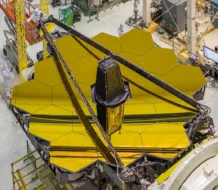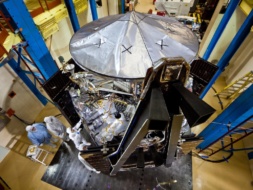Humanity peered deep into the universe over the last years, uncovering unprecedented details about distant exoplanets, the nature of black holes and dark matter, and bringing back pieces of other celestial bodies to examine back on Earth. But it’s not like we’ve seen it all, and the astronomy community has a full slate of missions that will be keeping this space writer busy for the foreseeable future.
Here’s a sneak peek of what you can expect in our ongoing exploration of the cosmos in 2024.
Return to the Moon: There are a ton of lunar lander missions slated to touch down in 2024, and though many of them have been pushed back for months or years, it seems like this is the year that it’s really happening. (Knock on wood.) Those missions include:
- Japan’s SLIM lander, which is already in lunar orbit and targeting a landing on Jan. 19
- Astrobotic’s Peregrine lander, which is manifested on the debut flight of ULA’s Vulcan rocket later as early as next week
- Intuitive Machines’ three lander missions, including the IM-1 mission targeting liftoff in February aboard a Falcon 9
- Firefly’s Blue Ghost mission, which is looking to land in the latter half of 2024
These missions have a host of scientific objectives on the docket, including hunting for water ice and understanding the mineral composition of different regions, measuring the radiation environment, and testing new technology needed to support human residence on the lunar surface.
NASA also technically has Artemis II, the second installment of the agency’s back-to-the-Moon program that will send a crew on a looping trajectory around the Moon, on its manifest for November. All signs are pointing to a delay to at least 2025, though.
Interplanetary probes: We’re traveling beyond the Moon this year, too. A few flagship science missions that have been in the works for decades are finally getting their rides to space in 2024. These include:
- Europa Clipper, the first dedicated mission to study Jupiter’s icy moon Europa and probe the possibility of life lurking beneath the surface
- EscaPADE, a Mars orbiter meant to study the magnetosphere and the impact of the solar wind
- Hera, ESA’s mission to follow up on the DART asteroid impact in 2022
An astronomical addition: There’s a total solar eclipse on its way this year. On Apr. 8, 2024, people in a 200-km-wide path of totality passing through Mexico, the US, and Canada will be able to watch the Moon eclipse the Sun. There won’t be another total solar eclipse visible from the US for another 20 years…so catch this one if you can.




